

| PRIMECLUSTER Installation and Administration Guide 4.1 (for Solaris(TM) Operating System) |
Contents
Index
 
|
| Part 2 Installation | > Chapter 6 Building Cluster Applications | > 6.6 Setting Up Cluster Applications | > 6.6.1 Setting Up Resources |
Configure the takeover IP addresses that are defined by the redundant line control function of Global Link Services (GLS).

For details on using the multipath function of Global Link Services (GLS), see "Chapter 7 Administration on a Cluster System" in "PRIMECLUSTER Global Link Services Configuration and Administration Guide: Multipath Function."
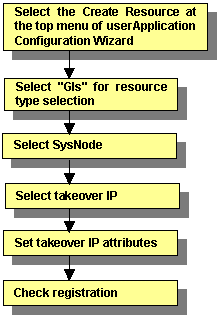
For information on the above operations up to "Select SysNode," see "Creating Cmdline Resources." This section describes the operations from "Select takeover IP."
 Selecting the takeover IP address
Selecting the takeover IP addressSelect the takeover IP address.
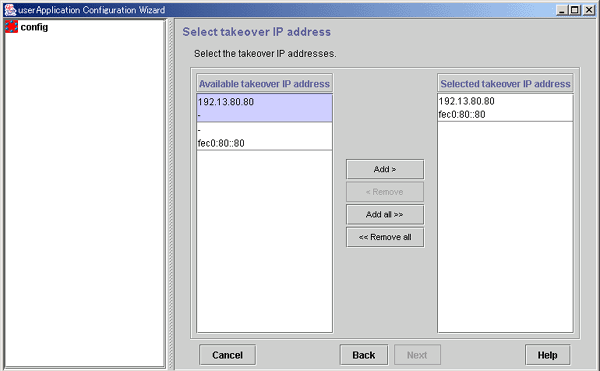
From Available takeover IP address, select takeover IP addresses, and then click Add. To add all listed takeover IP addresses, click Add all. To delete a takeover IP address, select the takeover IP address to be deleted from Selected takeover IP address, and then click Remove. To delete all listed takeover IP address, click Remove all.
After completing the setup, click Next to go to the "Set Takeover IP Address Attribute" screen.
 Setting attributes of the takeover IP address
Setting attributes of the takeover IP addressSet the attributes of the takeover IP address.
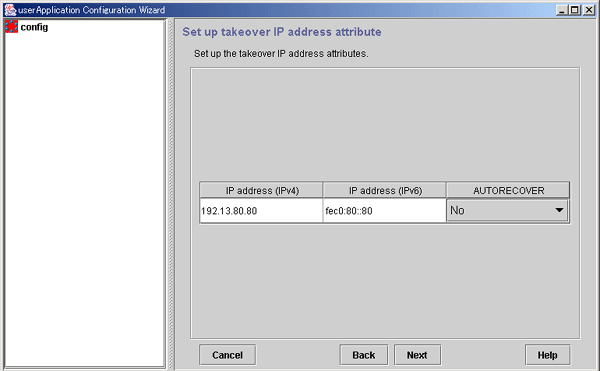
After completing the setup, click Next to go to "Checking Gls Resource Registration Information."
|
Flag |
Outline |
|---|---|
|
AUTORECOVER |
If the flag is set to "Yes," RMS attempts to restore the faulted resource for a given amount of time to prevent userApplication being switched to the other host. The default timeout is 60 seconds. You can change it by tuning the resource attribute Timeout. |
 Checking registration information for Gls resources
Checking registration information for Gls resourcesCheck the registration information for the Gls resources. You can also set resource attributes by selecting the Attributes tab and switching the screen.
For information on the resource attributes, see "Attributes."
Gls resource names are displayed as GlsX (X is a number, such as 0 or 1).
To register a Gls resource to a cluster application, select this resource name from Available Resources on the Select Resource screen.
For details, see "Creating Cluster Applications."
After registering the Gls resources to the cluster application, be sure to restart the system.
Then start RMS, look at the RMS tree, and check that the Gls resources are displayed correctly. For details, see "RMS Tree."
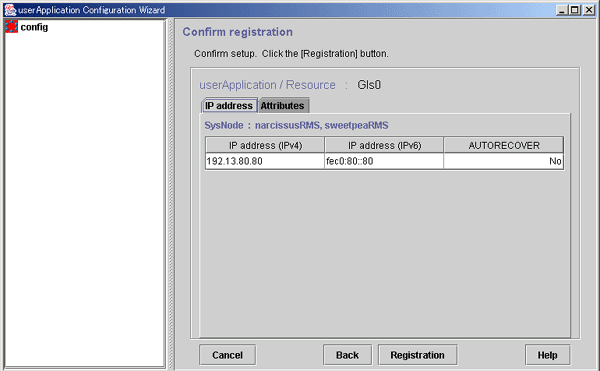
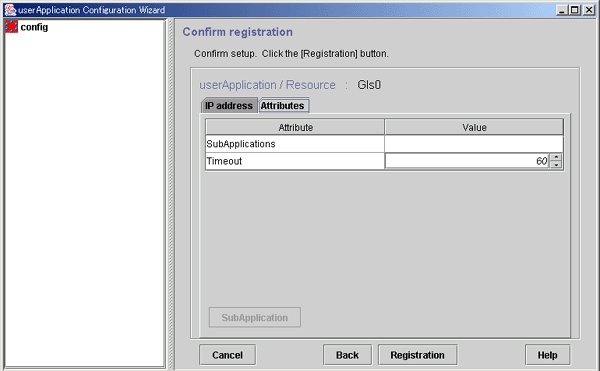
After checking the registration information, click Registration.
Contents
Index
 
|